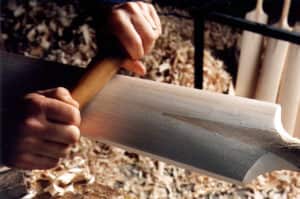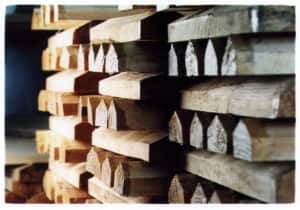
We are getting an increased number of enquiries from people wishing to make their own cricket bat. It is a common belief that the shaping of wood is all that is required. Indeed, shaping is an important part of balance and weight, however, there is much more to crafting a bat suitable for match play than shape alone. Specialist tools and skills are necessary to craft a bat suitable for use. Another restriction is access to the right type of willow.

There has been a number of attempts to offer short courses in bat making, quick introductions to a craft that takes many years to master. In an ideal situation, an accredited course (through recognised education institutes) would grow the craft, improve professional practices and combat the growing importation of mass produced bats that are passed off as Australian made.
Unfortunately, the limit of supply of willow from the merchants to a small few, mainly in India, has encouraged this practice and prevented the growth and healthy competition among genuine makers.
 So when you ask to purchase willow clefts, or think about making a bat for a school project, consider the specialist machinery required to process a raw cleft to the correct dimensions, a press for only the face for optimal rebound, splice and fitting a handle and then shape and finish. There are some manufacturers that purchase part made bats that are processed, pressed and handle fitted. This is much of the work done that will determine the final performance. It is also the only option available to many starting out.
So when you ask to purchase willow clefts, or think about making a bat for a school project, consider the specialist machinery required to process a raw cleft to the correct dimensions, a press for only the face for optimal rebound, splice and fitting a handle and then shape and finish. There are some manufacturers that purchase part made bats that are processed, pressed and handle fitted. This is much of the work done that will determine the final performance. It is also the only option available to many starting out.
Master bat makers take a raw cleft of willow through all stages of a finished cricket bat, ready for all levels of cricket. This is a term earnt after decades of learning and practice. Bradbury use it with pride.
